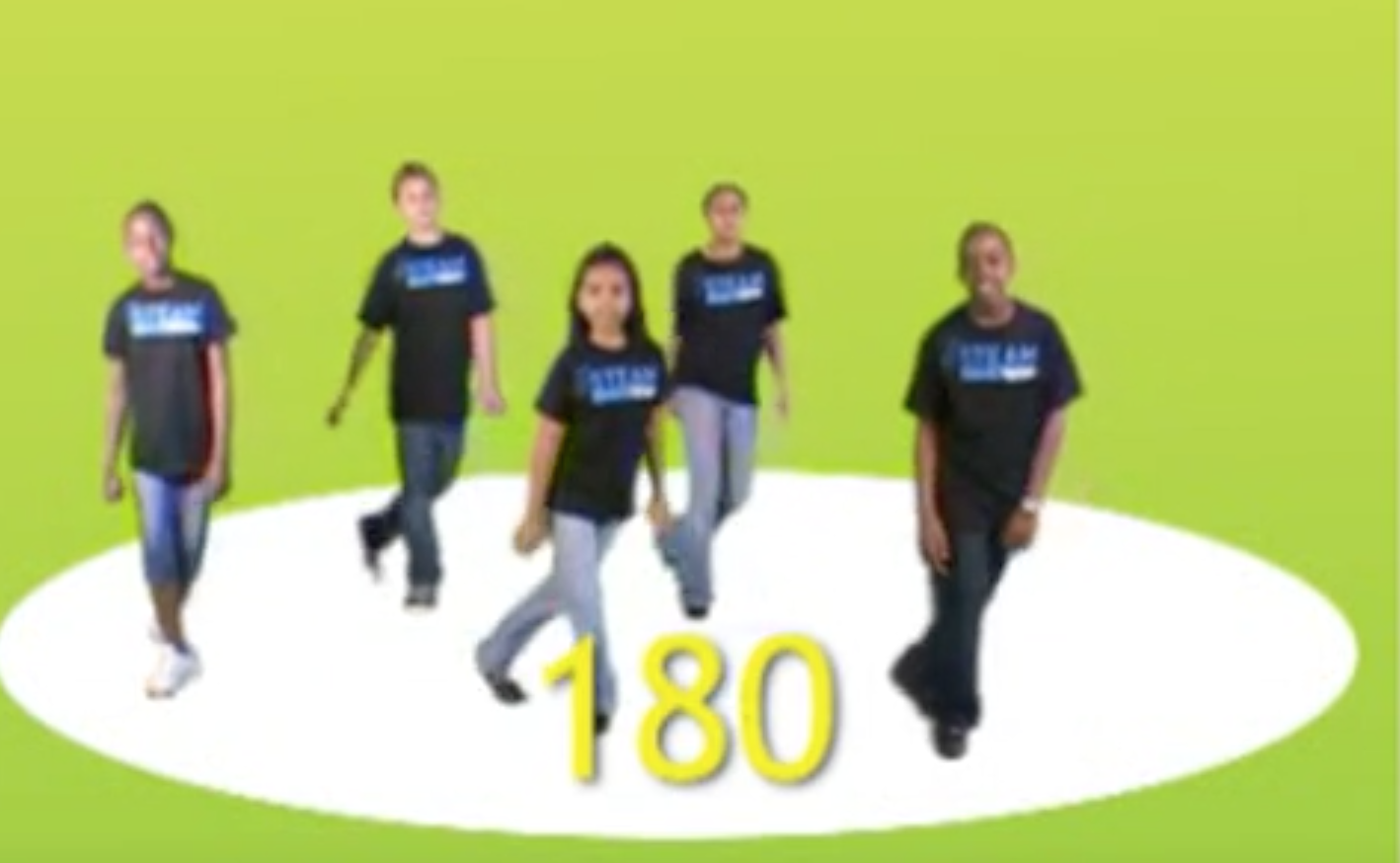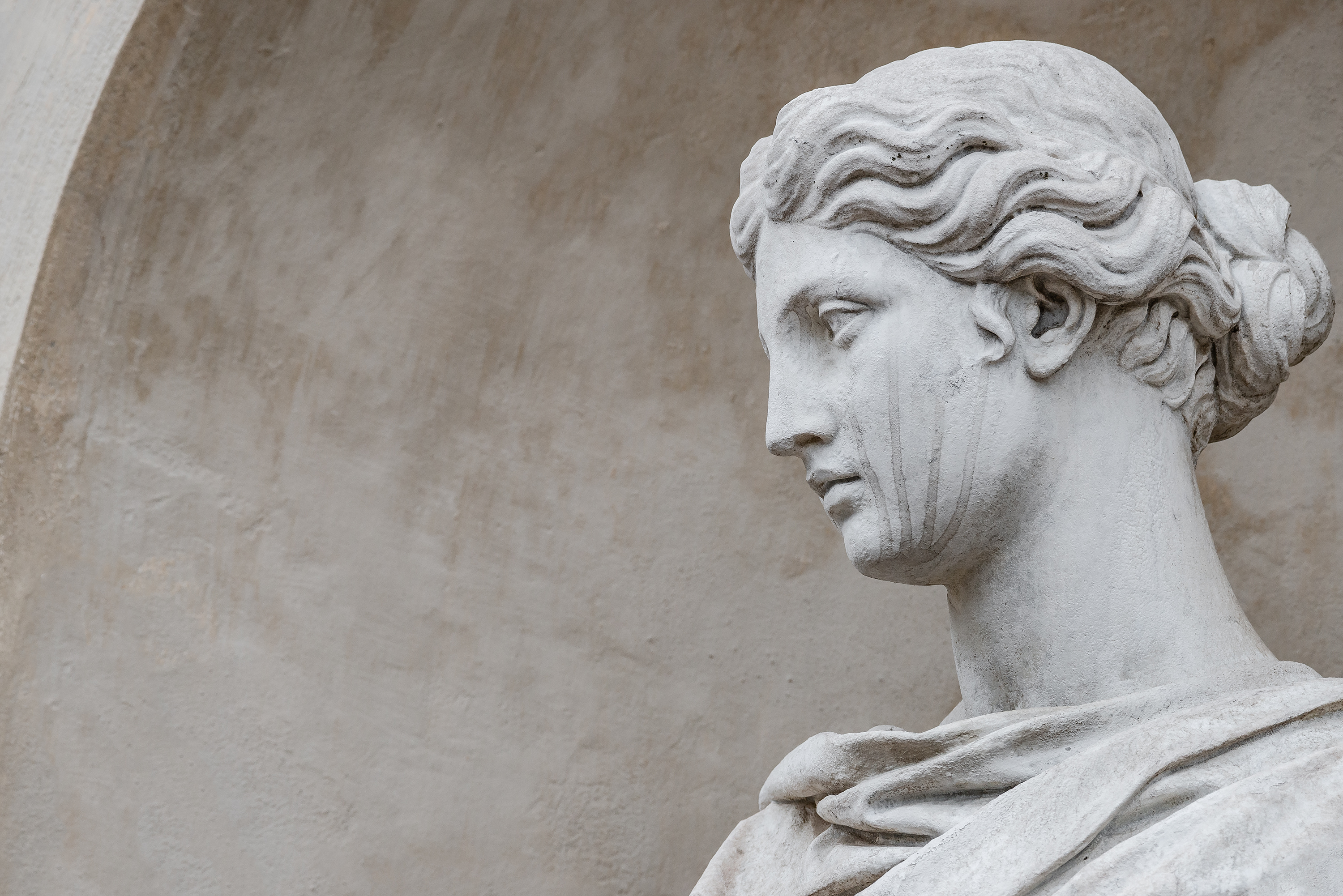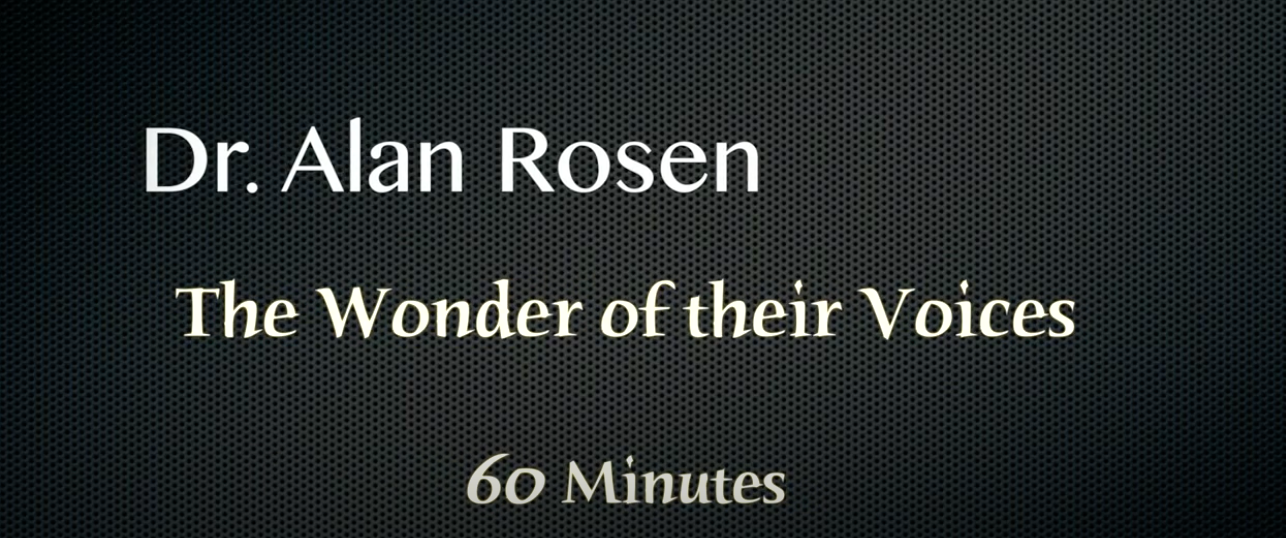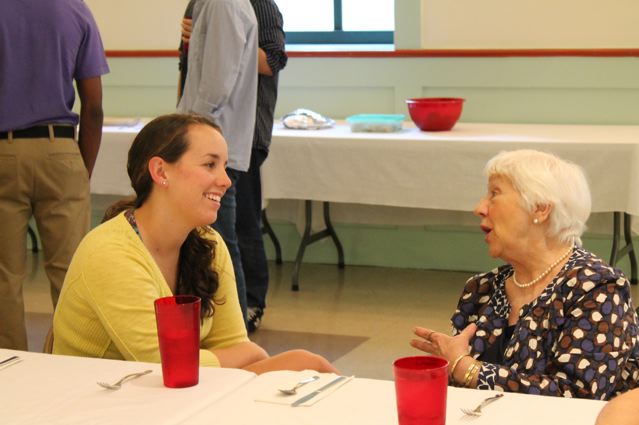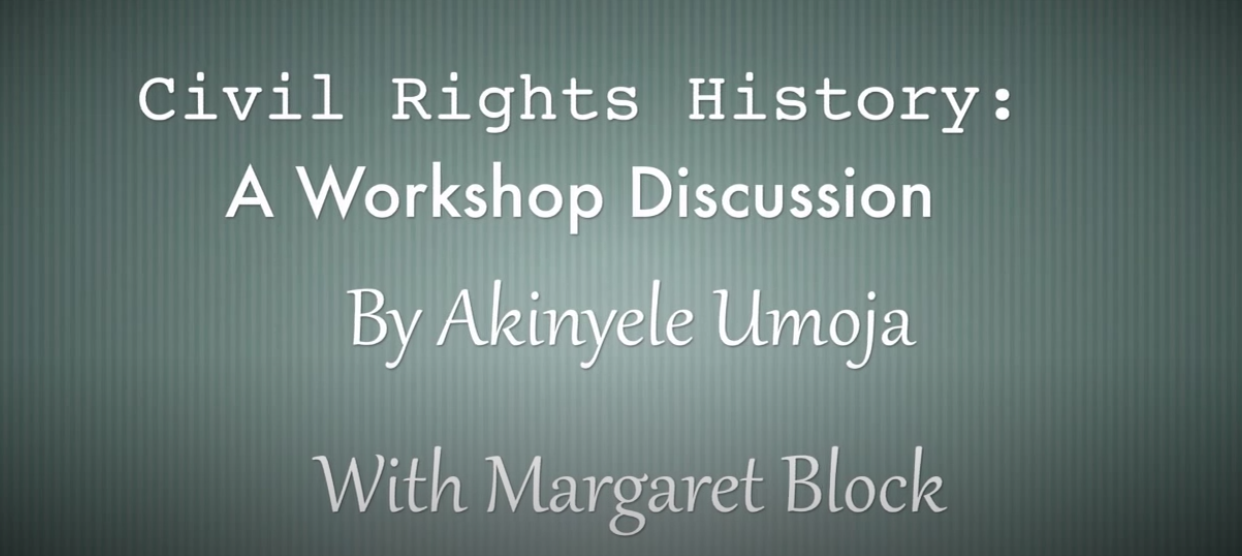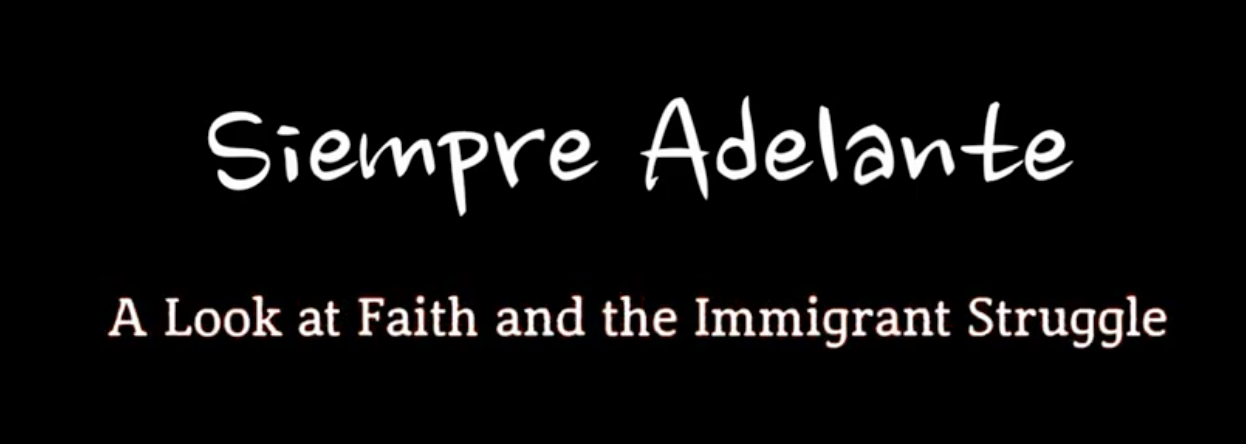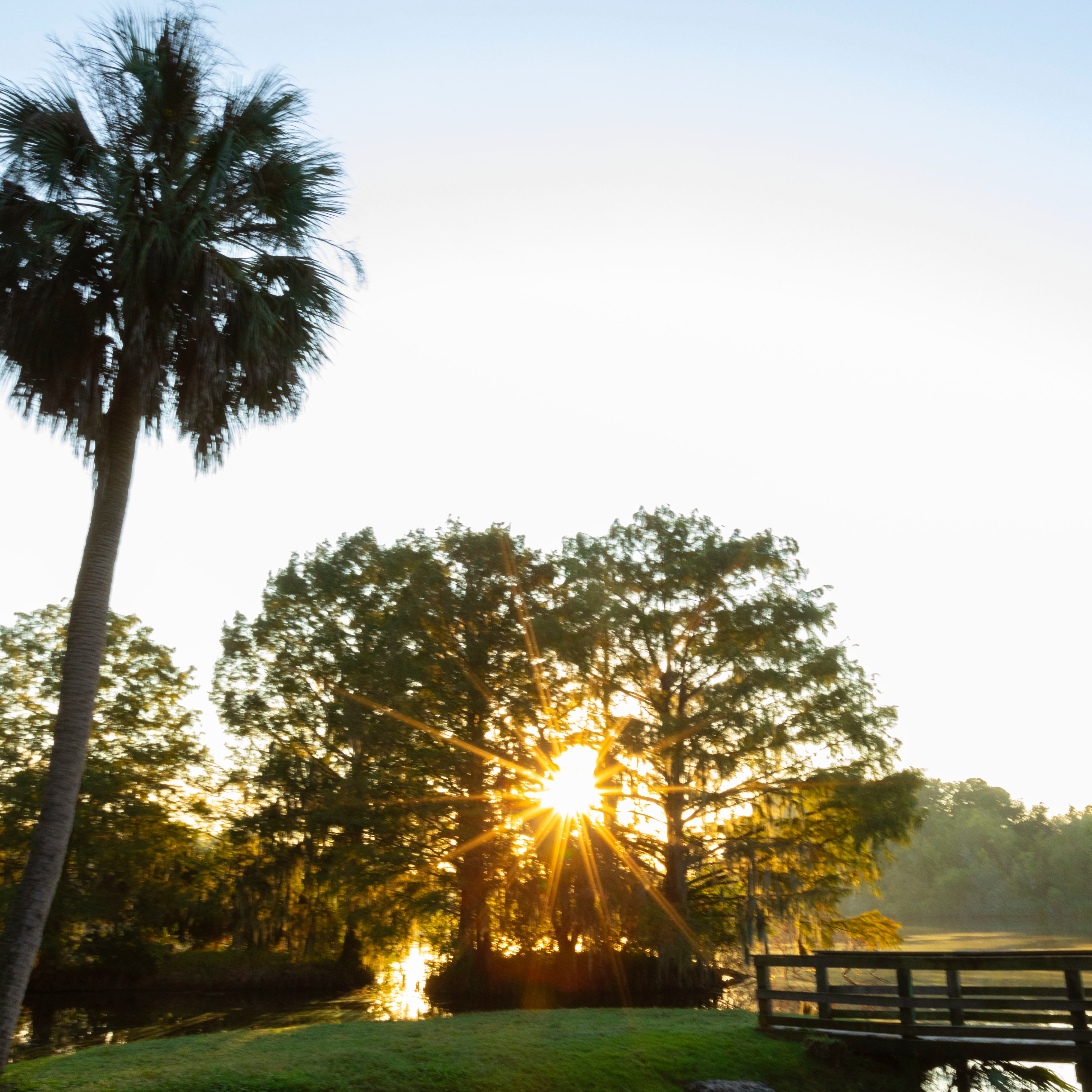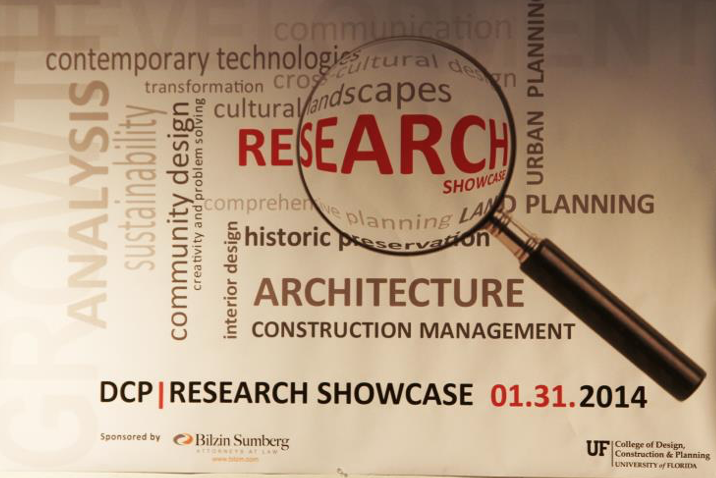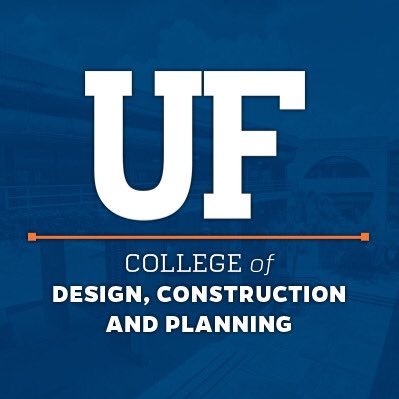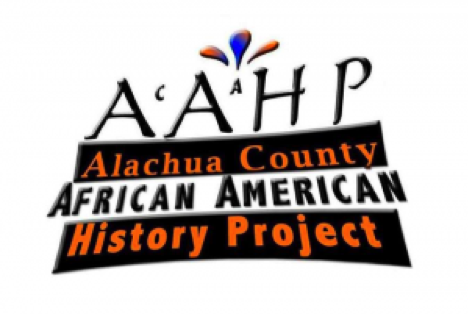Enjoy this gallery of civically-engaged arts, humanities, and design projects. Add your project here
2013
The UF Lastinger Center for Learning and Digital Worlds Institute produced the DVD / Teacher Materials album "Gloria's Hip Hop Math" as a means of giving teachers and students a step-by-step example of how to infuse the arts into the math classroom. The STEAM Team can be seen in a number of videos illustrating how math concepts can be embodied and reinforced through music and movement. Students can then expand and demonstrate their understanding of the subject matter by creating their own songs and movement patterns.
http://www.digitalworlds.ufl.edu/steam/
http://vimeo.com/50624907 (the vimeo video)
2013
The UF Lastinger Center for Learning and Digital Worlds Institute produced the DVD / Teacher Materials album "Gloria's Hip Hop Math" as a means of giving teachers and students a step-by-step example of how to infuse the arts into the math classroom. The STEAM Team can be seen in a number of videos illustrating how math concepts can be embodied and reinforced through music and movement. Students can then expand and demonstrate their understanding of the subject matter by creating their own songs and movement patterns.
http://www.digitalworlds.ufl.edu/steam/
http://vimeo.com/50624907 (the vimeo video)
2013
UF Department of Classics will be participating in a new project called "Ancient Greeks/Modern Lives: Poetry-Drama-Dialogue" (2011-2013). This program represents an important new nationwide partnership between libraries and the theatre supported by a major grant from the National Endowment for the Humanities. The program will have an additional focus on cross-cultural impact relating to the African-American, Asian-American, and Latino experience and a special emphasis on veterans and their families and will be guided by consultants specializing in these areas. Gonda Van Steen, Cassas Professor in Greek Studies (gonda@ufl.edu), will facilitate this program as the University of Florida representative.
Ancient Greeks/Modern Lives will travel to 100 public libraries and performing arts centers nationwide to inspire people to come together to read, see, and think about classical literature and how it continues to influence and invigorate American cultural life. The program is organized around four thematic units: 1) Rites of Passage: Changing Worlds, Transforming Lives; 2) Stranger in a Strange Land: Encountering the Other; 3)Homecoming: The Return of the Warrior and 4) From Homer to Hip Hop: The Art of Storytelling.
Ancient Greeks/Modern Lives: Poetry-Drama-Dialogue unites the assets of the Aquila Theatre Company (professional company-in-residence at NYU's Center for Ancient Studies), the Urban Libraries Council (ULC), the American Philological Association (APA), the Harvard Center for Hellenic Studies in Washington DC, and the Center for Ancient Studies at New York University.
2013
UF Department of Classics will be participating in a new project called "Ancient Greeks/Modern Lives: Poetry-Drama-Dialogue" (2011-2013). This program represents an important new nationwide partnership between libraries and the theatre supported by a major grant from the National Endowment for the Humanities. The program will have an additional focus on cross-cultural impact relating to the African-American, Asian-American, and Latino experience and a special emphasis on veterans and their families and will be guided by consultants specializing in these areas. Gonda Van Steen, Cassas Professor in Greek Studies (gonda@ufl.edu), will facilitate this program as the University of Florida representative.
Ancient Greeks/Modern Lives will travel to 100 public libraries and performing arts centers nationwide to inspire people to come together to read, see, and think about classical literature and how it continues to influence and invigorate American cultural life. The program is organized around four thematic units: 1) Rites of Passage: Changing Worlds, Transforming Lives; 2) Stranger in a Strange Land: Encountering the Other; 3)Homecoming: The Return of the Warrior and 4) From Homer to Hip Hop: The Art of Storytelling.
Ancient Greeks/Modern Lives: Poetry-Drama-Dialogue unites the assets of the Aquila Theatre Company (professional company-in-residence at NYU's Center for Ancient Studies), the Urban Libraries Council (ULC), the American Philological Association (APA), the Harvard Center for Hellenic Studies in Washington DC, and the Center for Ancient Studies at New York University.
2013
Dr. Alan Rosen gave this lecture at the University of Florida at Pugh Hall on February 12, 2013 to a packed room. Dr. Paul Ortiz, director of the Samuel Proctor Oral History Program, made introductions.
Dr. Alan Rosen earned his Ph.D. in literature and religion at Boston University where he studied under the supervision of renowned Holocaust survivor, Nobel Peace Prize winner, and Founding Chairman of the United States Holocaust Memorial Council Elie Wiesel. Rosen has taught Holocaust literature at colleges and universities in Israel and the United States, as well as at Yad Vashem's International School for Holocaust Studies (Jerusalem, Israel). As the first recipient of the Center for Advanced Holocaust Studies' Sosland Foundation Fellowship, Dr. Rosen conducted research for his book, "The Wonder of their Voices: The 1946 Holocaust Interviews of David Boder."
2013
Dr. Alan Rosen gave this lecture at the University of Florida at Pugh Hall on February 12, 2013 to a packed room. Dr. Paul Ortiz, director of the Samuel Proctor Oral History Program, made introductions.
Dr. Alan Rosen earned his Ph.D. in literature and religion at Boston University where he studied under the supervision of renowned Holocaust survivor, Nobel Peace Prize winner, and Founding Chairman of the United States Holocaust Memorial Council Elie Wiesel. Rosen has taught Holocaust literature at colleges and universities in Israel and the United States, as well as at Yad Vashem's International School for Holocaust Studies (Jerusalem, Israel). As the first recipient of the Center for Advanced Holocaust Studies' Sosland Foundation Fellowship, Dr. Rosen conducted research for his book, "The Wonder of their Voices: The 1946 Holocaust Interviews of David Boder."
2013
On Thursday, April 25, the Spring 2013 academic intern class of the Samuel Proctor Oral History Program (SPOHP) gathered at Trinity Episcopal Church in Gainesville with members of Trinity’s congregation to premiere the new documentary, “The Fire Within: The Rebuilding of a Downtown Community.” The film was a culmination of four months of work between SPOHP interns and digital coordinators with the Trinity Episcopal community.
In January 1991, an arsonist burned down the historic Holy Trinity Episcopal Church in downtown Gainesville, Florida. A four-year rebuilding process brought back Holy Trinity’s worship site and ended in an expansion of church facilities.
Last year, Holy Trinity approached SPOHP about the idea of chronicling their church history. Students spent the past four months chronicling the aftermath of 1991 arson on Trinity’s congregation and the process of church building.
2013
On Thursday, April 25, the Spring 2013 academic intern class of the Samuel Proctor Oral History Program (SPOHP) gathered at Trinity Episcopal Church in Gainesville with members of Trinity’s congregation to premiere the new documentary, “The Fire Within: The Rebuilding of a Downtown Community.” The film was a culmination of four months of work between SPOHP interns and digital coordinators with the Trinity Episcopal community.
In January 1991, an arsonist burned down the historic Holy Trinity Episcopal Church in downtown Gainesville, Florida. A four-year rebuilding process brought back Holy Trinity’s worship site and ended in an expansion of church facilities.
Last year, Holy Trinity approached SPOHP about the idea of chronicling their church history. Students spent the past four months chronicling the aftermath of 1991 arson on Trinity’s congregation and the process of church building.
2013
On January 21, 1991, an arsonist burned the historic Holy Trinity Episcopal Church in downtown Gainesville, Florida.
University of Florida student interns of the Samuel Proctor Oral History Program gathered 13 oral histories of the rebuilding to create this documentary describing the impact of the event. Along with rebuilding the church came a rebuilding of the mission of the church. That story is captured here in this video.
2013
On January 21, 1991, an arsonist burned the historic Holy Trinity Episcopal Church in downtown Gainesville, Florida.
University of Florida student interns of the Samuel Proctor Oral History Program gathered 13 oral histories of the rebuilding to create this documentary describing the impact of the event. Along with rebuilding the church came a rebuilding of the mission of the church. That story is captured here in this video.
2013
Students from the Samuel Proctor Oral History Program are participants in a discussion of Civil Rights history by professor Akinyele Umoja and veteran civil rights activist, Margaret Block. The workshop was given in Cleveland, Mississippi on September 20, 2013. Students engage in an annual research trip under the guidance of the Samuel Proctor Oral History Program at the University of Florida for the purpose of collecting oral histories from key figures in the Civil Rights Movement.
2013
Students from the Samuel Proctor Oral History Program are participants in a discussion of Civil Rights history by professor Akinyele Umoja and veteran civil rights activist, Margaret Block. The workshop was given in Cleveland, Mississippi on September 20, 2013. Students engage in an annual research trip under the guidance of the Samuel Proctor Oral History Program at the University of Florida for the purpose of collecting oral histories from key figures in the Civil Rights Movement.
2013
Siempre Adelante features the life narratives of four immigrants from three different countries (Mexico, El Salvador, and Guatemala) who share the struggle of always moving forward. This film offers a minuscule sample of the large immigrant population of Alachua county and north central Florida. These brave individuals allow us to take a peek into their personal struggles with domestic violence, exploitation, family dynamics, and their journey to a foreign land in hopes of providing a better quality of life for themselves and their loved ones. The goal of this film is to impart how religion and the church has been a source of support and motivation for them in the face of fear and discrimination in an unwelcoming land. Siempre Adelante hopes to motivate fellow believers to become part of the immigrant rights movement, and to realize that these stories are a reflection of the lives of their sisters and brothers.
Concept by Jaime Zelaya and the Samuel Proctor Oral History Program.
2013
Siempre Adelante features the life narratives of four immigrants from three different countries (Mexico, El Salvador, and Guatemala) who share the struggle of always moving forward. This film offers a minuscule sample of the large immigrant population of Alachua county and north central Florida. These brave individuals allow us to take a peek into their personal struggles with domestic violence, exploitation, family dynamics, and their journey to a foreign land in hopes of providing a better quality of life for themselves and their loved ones. The goal of this film is to impart how religion and the church has been a source of support and motivation for them in the face of fear and discrimination in an unwelcoming land. Siempre Adelante hopes to motivate fellow believers to become part of the immigrant rights movement, and to realize that these stories are a reflection of the lives of their sisters and brothers.
Concept by Jaime Zelaya and the Samuel Proctor Oral History Program.
2013
In 2013, the UF Center for the Humanities and the Public Sphere (CHPS) launched its grants for Programs in the Public Humanities. The Public Humanities grant opportunity, supported by the CHPS Rothman Endowment, encourages and enhances collaboration between the University of Florida and individuals, groups, and organizations in the community by offering grants up to $3,000 to support public programs rooted in one or more of the humanities disciplines. By drawing on expertise from UF and community partners as co-applicants, these public humanities projects create new and exciting opportunities for collaboration between the university and multiple community organizations. Furthermore, these projects encourage community building, cultural understanding, and personal reflection on the values and experiences that connect us together as neighbors, colleagues, and community members to create a civil and morally responsible society. Through projects like these, the Center for Humanities and the Public Sphere seeks to promote broad civic engagement with the communities in which we live and teach.
2013
In 2013, the UF Center for the Humanities and the Public Sphere (CHPS) launched its grants for Programs in the Public Humanities. The Public Humanities grant opportunity, supported by the CHPS Rothman Endowment, encourages and enhances collaboration between the University of Florida and individuals, groups, and organizations in the community by offering grants up to $3,000 to support public programs rooted in one or more of the humanities disciplines. By drawing on expertise from UF and community partners as co-applicants, these public humanities projects create new and exciting opportunities for collaboration between the university and multiple community organizations. Furthermore, these projects encourage community building, cultural understanding, and personal reflection on the values and experiences that connect us together as neighbors, colleagues, and community members to create a civil and morally responsible society. Through projects like these, the Center for Humanities and the Public Sphere seeks to promote broad civic engagement with the communities in which we live and teach.
2013
N. O. Nawari, architecture associate professor, working in collaboration with Frank Bosworth, director of CityLab-Orlando, and Michael Kuenstle, architecture associate professor, extended the architectural structures curriculum into the built environment using Dr. Phillips Center for the Performing Arts in Orlando.
The knowledge of building structures in the architectural curriculum is based on part theory and part applications. Teaching graduate students the principles of structural, design of steel, concrete and wood using physics, numerical equations and advanced computer modeling can be a difficult task and with the School of Architecture CityLab situated in Orlando, we are fortunate to have a steady stream of building projects constructed in Orlando during the past few years to use as teaching laboratories. Often it is when students are given the opportunity to make on-site observations of the creative applications of this complex science that the course starts to come together as a critical knowledge base for students.
This term, the professors used the 330,000-square-foot statement in the heart of downtown Orlando, designed to capture the heartbeat of the people who live here as a case study project to focus student research on structural steel and concrete framing and system details. The building is designed by Barton Myers Associates, working with local architects HKS Inc. and Baker Barrios Architect. Special thanks and gratitude are due to architect Jacki Hale and structural engineer Laura Lewis for facilitating the site tour and presentation.
2013
N. O. Nawari, architecture associate professor, working in collaboration with Frank Bosworth, director of CityLab-Orlando, and Michael Kuenstle, architecture associate professor, extended the architectural structures curriculum into the built environment using Dr. Phillips Center for the Performing Arts in Orlando.
The knowledge of building structures in the architectural curriculum is based on part theory and part applications. Teaching graduate students the principles of structural, design of steel, concrete and wood using physics, numerical equations and advanced computer modeling can be a difficult task and with the School of Architecture CityLab situated in Orlando, we are fortunate to have a steady stream of building projects constructed in Orlando during the past few years to use as teaching laboratories. Often it is when students are given the opportunity to make on-site observations of the creative applications of this complex science that the course starts to come together as a critical knowledge base for students.
This term, the professors used the 330,000-square-foot statement in the heart of downtown Orlando, designed to capture the heartbeat of the people who live here as a case study project to focus student research on structural steel and concrete framing and system details. The building is designed by Barton Myers Associates, working with local architects HKS Inc. and Baker Barrios Architect. Special thanks and gratitude are due to architect Jacki Hale and structural engineer Laura Lewis for facilitating the site tour and presentation.
2014
At this year’s Seventh Annual DCP Research Showcase, faculty, students and industry professionals presented and discussed research on this year’s theme, “Collaborative Community Initiatives.”
In the afternoon, industry professionals participated in the “Collaboration in the Community” panel discussion and UF faculty from other colleges participated in the “Collaboration in the University Community” panel discussion.
The Research Showcase concluded with the keynote address from Dr. David Norton, UF Vice President for Research. Norton presented on the topic, “Collaborative and Interdisciplinary Research: Creating New Knowledge at the Interface.”
2014
At this year’s Seventh Annual DCP Research Showcase, faculty, students and industry professionals presented and discussed research on this year’s theme, “Collaborative Community Initiatives.”
In the afternoon, industry professionals participated in the “Collaboration in the Community” panel discussion and UF faculty from other colleges participated in the “Collaboration in the University Community” panel discussion.
The Research Showcase concluded with the keynote address from Dr. David Norton, UF Vice President for Research. Norton presented on the topic, “Collaborative and Interdisciplinary Research: Creating New Knowledge at the Interface.”
2014
Throughout the Spring semester, the studio’s 12 students met with the community and local group Brothers United to discuss the design of the pavilion, which will host musical performances, pageants, outdoor classes and other events. Each year, it will also serve as the centerpiece for the town’s annual Emancipation Day celebration that draws thousands of participants.
The pavilion is adjacent to the now closed Carver School, which is a significant historic site for the African American community. To honor the school’s faculty, the students designed a memorial with teachers’ names placed within the pavilion’s wall that faces the Carver School site.
Breaking ground the week before Spring Break, the students continued to build the project during the rest of the semester. Architecture PhD student Carla Brisotto assisted with studio teaching during the semester. On Wednesday April 29, the community held a ribbon-cutting ceremony for the pavilion.
2014
Throughout the Spring semester, the studio’s 12 students met with the community and local group Brothers United to discuss the design of the pavilion, which will host musical performances, pageants, outdoor classes and other events. Each year, it will also serve as the centerpiece for the town’s annual Emancipation Day celebration that draws thousands of participants.
The pavilion is adjacent to the now closed Carver School, which is a significant historic site for the African American community. To honor the school’s faculty, the students designed a memorial with teachers’ names placed within the pavilion’s wall that faces the Carver School site.
Breaking ground the week before Spring Break, the students continued to build the project during the rest of the semester. Architecture PhD student Carla Brisotto assisted with studio teaching during the semester. On Wednesday April 29, the community held a ribbon-cutting ceremony for the pavilion.
2014
Four interdisciplinary teams competed March 21-23 for the 2014 Witters Competition. The 48-hour design charrette was led by Tom Smith, SoA senior lecturer, and Ravi Srinivasan, BCN assistant professor.
The project challenge was to develop a proposal for a mixed use, housing project in the downtown area of Gainesville. The proposal would provide a viable alternative development project in comparison to the single-family housing or apartment living buildings that currently make up the area. The challenge also tasked the teams to develop structures that met the Living Building Guidelines (LBC) which includes site, water, energy, health, materials, equity and beauty.
This year’s winning team was Lawrence Zeng, LAE, Alexandra Fasshauer, ARCH, Julie Emminger, IND, and Bethany Mayhew, ARCH. This team was the smallest of the four teams that competed which worked to their advantage.
Of the four students, one had competed in the Witters Competition before. “This experience has been extremely positive for me,” says Emminger. “Working in small interdisciplinary teams brings out the creativity in all of us. This is true collaboration and allows us to build holistically, as everyone gets to contribute.”
When asked what advice to give to future Witters Competition team members, Fasshauer says to definitely get involved with the competition and take advantage of working with students from other disciplines. “Seeing what we could produce in a short amount of time made us realize what we are capable of when working in an interdisciplinary team,” states Fasshauer. “We continued to stay open-minded throughout the process and allowed everyone to contribute ideas and thoughts.”
Established in 1993, the Witters Competition is endowed by Arthur G. and Beverley A. Witters for a college-wide interdisciplinary academic competition to foster better understanding among design, construction and planning students.
2014
Four interdisciplinary teams competed March 21-23 for the 2014 Witters Competition. The 48-hour design charrette was led by Tom Smith, SoA senior lecturer, and Ravi Srinivasan, BCN assistant professor.
The project challenge was to develop a proposal for a mixed use, housing project in the downtown area of Gainesville. The proposal would provide a viable alternative development project in comparison to the single-family housing or apartment living buildings that currently make up the area. The challenge also tasked the teams to develop structures that met the Living Building Guidelines (LBC) which includes site, water, energy, health, materials, equity and beauty.
This year’s winning team was Lawrence Zeng, LAE, Alexandra Fasshauer, ARCH, Julie Emminger, IND, and Bethany Mayhew, ARCH. This team was the smallest of the four teams that competed which worked to their advantage.
Of the four students, one had competed in the Witters Competition before. “This experience has been extremely positive for me,” says Emminger. “Working in small interdisciplinary teams brings out the creativity in all of us. This is true collaboration and allows us to build holistically, as everyone gets to contribute.”
When asked what advice to give to future Witters Competition team members, Fasshauer says to definitely get involved with the competition and take advantage of working with students from other disciplines. “Seeing what we could produce in a short amount of time made us realize what we are capable of when working in an interdisciplinary team,” states Fasshauer. “We continued to stay open-minded throughout the process and allowed everyone to contribute ideas and thoughts.”
Established in 1993, the Witters Competition is endowed by Arthur G. and Beverley A. Witters for a college-wide interdisciplinary academic competition to foster better understanding among design, construction and planning students.
2014
Thanks to musician and music educator, David Ford of Tonewood Family Music, Inc., patients of all ages and their families are invited to sing, dance, and play a variety of instruments to express that we all have “Music in Me!”
“Music in Me” is associated with the UF Health Shands Children’s Hospital Child Life Program in partnership with Shands Arts in Medicine, and is made possible through the generous support of the Avnee Rawal Fund for Pediatric Health and Community Wellness.
2014
Thanks to musician and music educator, David Ford of Tonewood Family Music, Inc., patients of all ages and their families are invited to sing, dance, and play a variety of instruments to express that we all have “Music in Me!”
“Music in Me” is associated with the UF Health Shands Children’s Hospital Child Life Program in partnership with Shands Arts in Medicine, and is made possible through the generous support of the Avnee Rawal Fund for Pediatric Health and Community Wellness.
2014
The Alachua County African American History Project enables the Samuel Proctor Oral History Program to conduct and transcribe oral histories with African Americans in Alachua County, University of Florida, and surrounding areas who came of age during the final decades of legal segregation. AAHP involves students who conduct oral histories as part of research seminars and community-based internships. These histories are used to establish an archive of black historical narratives on segregation and the civil rights movement. Researchers will explore themes such as landownership, labor, entrepreneurship, civil rights, education, and histories of institutions such as schools, churches and civic organizations.
2014
The Alachua County African American History Project enables the Samuel Proctor Oral History Program to conduct and transcribe oral histories with African Americans in Alachua County, University of Florida, and surrounding areas who came of age during the final decades of legal segregation. AAHP involves students who conduct oral histories as part of research seminars and community-based internships. These histories are used to establish an archive of black historical narratives on segregation and the civil rights movement. Researchers will explore themes such as landownership, labor, entrepreneurship, civil rights, education, and histories of institutions such as schools, churches and civic organizations.
2014
“Sarasota offers unique opportunities for UF students to study architecture and urbanism in a culturally and environmentally rich community that also faces great ecological and infrastructural challenges as it continues to grow,” said Martin Gold, Director of the UF School of Architecture.
The program will focus on issues of emerging technology, culture, and climate responsive architecture drawn from the movement known as the Sarasota School of Architecture, also known as “Sarasota Modern.” This regional style brought the area international recognition from the 1940s through the 1960s for adapting the International Style to the tropical climate.
CityLab-Sarasota was developed through collaboration among the UF School of Architecture, Sarasota County and the newly formed Center for Architecture (CFA).
The CFA, a local nonprofit organization whose leadership is drawn from local citizens, design professionals, stakeholders and community advocates, will curate permanent and visiting exhibits, organize community lectures, seminars and workshops and will liaise with CityLab-Sarasota on projects related to community design.
2014
“Sarasota offers unique opportunities for UF students to study architecture and urbanism in a culturally and environmentally rich community that also faces great ecological and infrastructural challenges as it continues to grow,” said Martin Gold, Director of the UF School of Architecture.
The program will focus on issues of emerging technology, culture, and climate responsive architecture drawn from the movement known as the Sarasota School of Architecture, also known as “Sarasota Modern.” This regional style brought the area international recognition from the 1940s through the 1960s for adapting the International Style to the tropical climate.
CityLab-Sarasota was developed through collaboration among the UF School of Architecture, Sarasota County and the newly formed Center for Architecture (CFA).
The CFA, a local nonprofit organization whose leadership is drawn from local citizens, design professionals, stakeholders and community advocates, will curate permanent and visiting exhibits, organize community lectures, seminars and workshops and will liaise with CityLab-Sarasota on projects related to community design.
